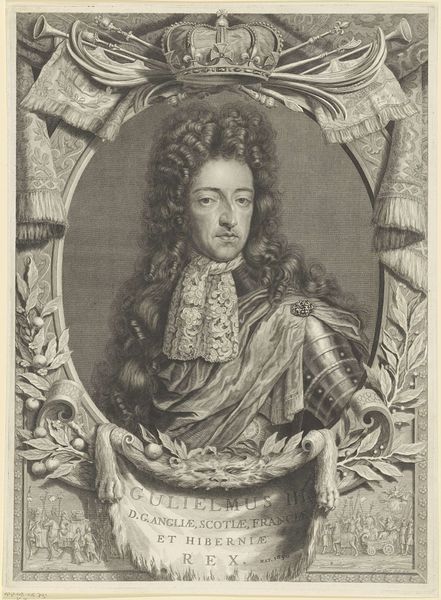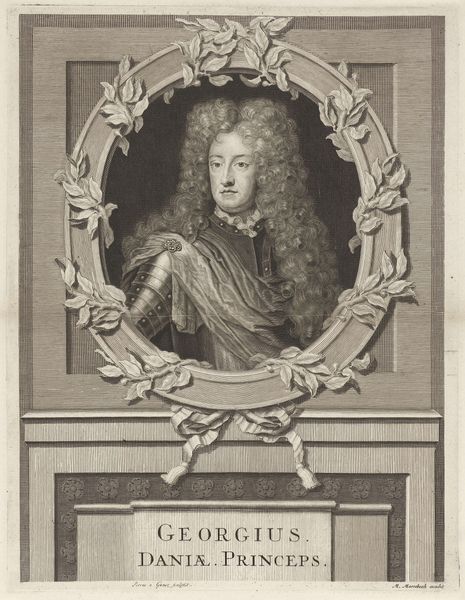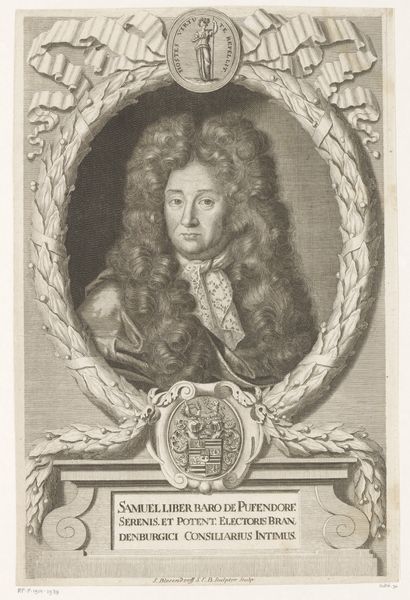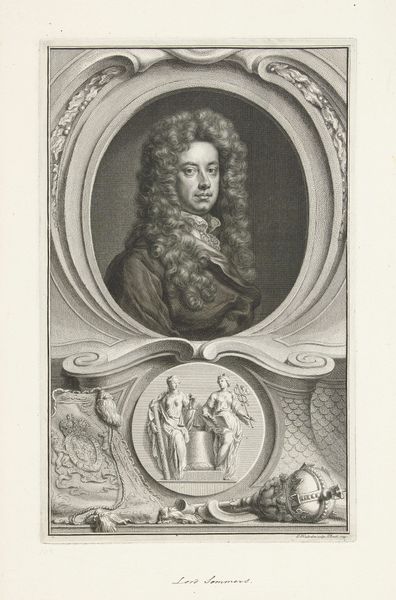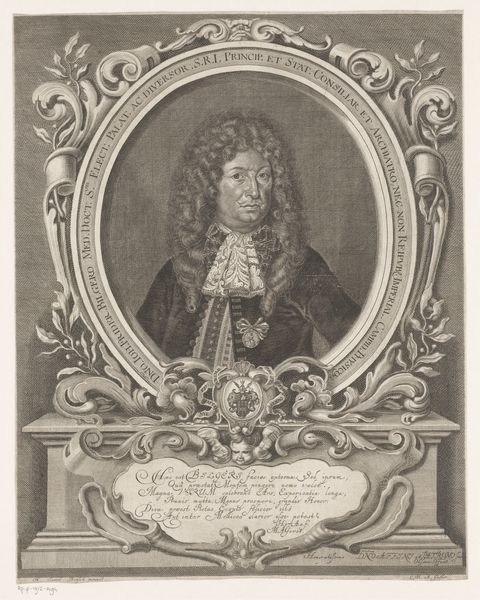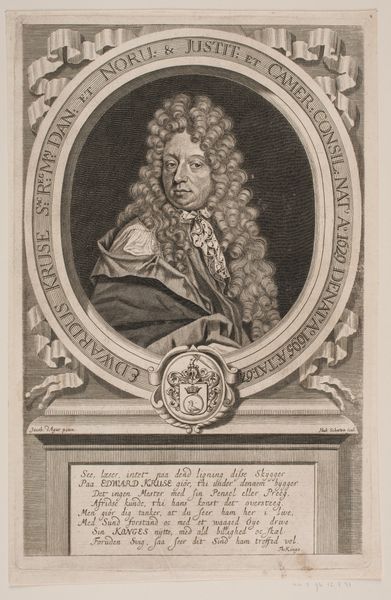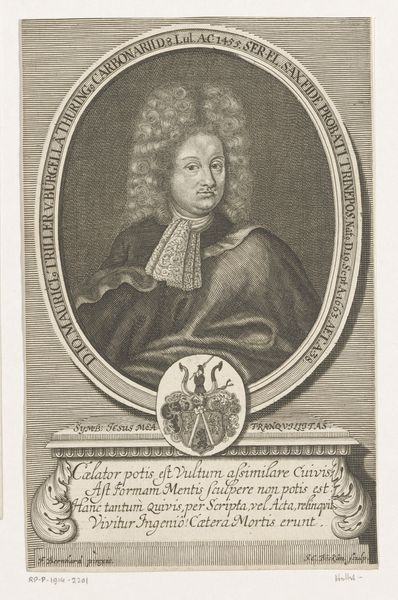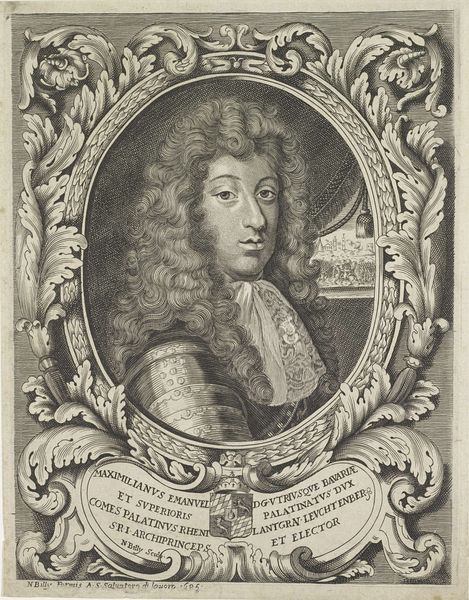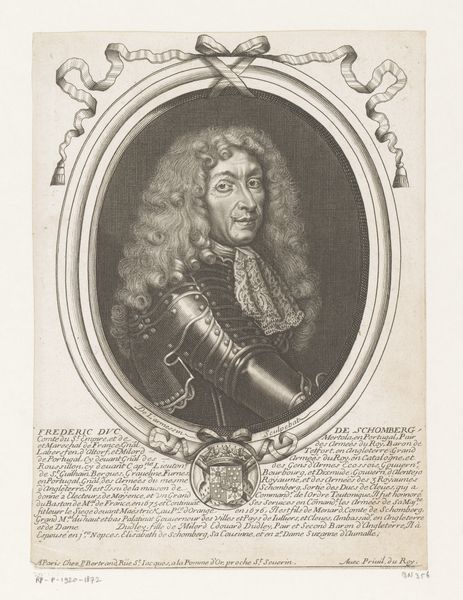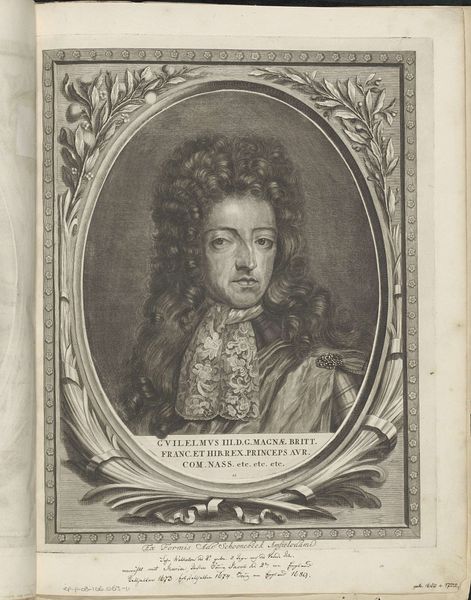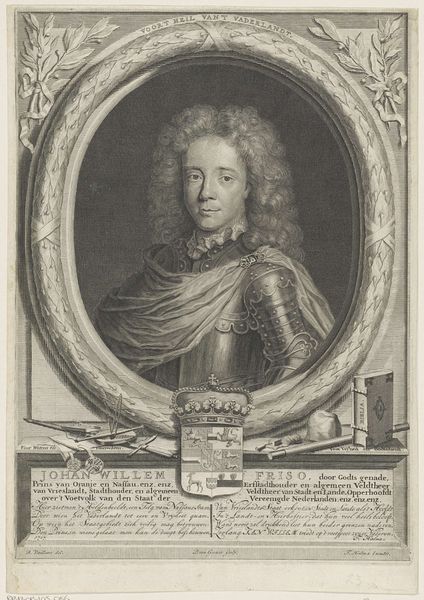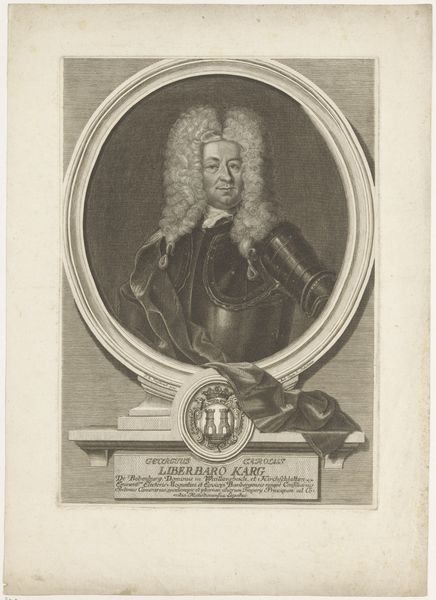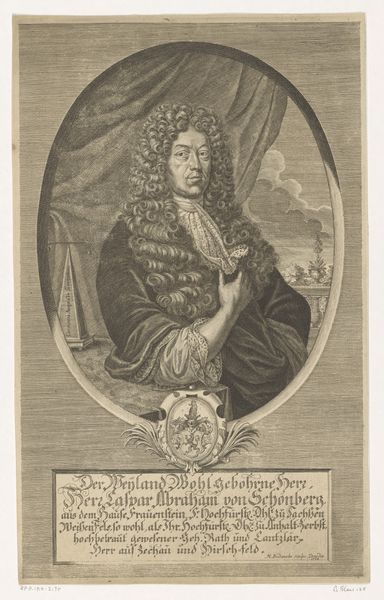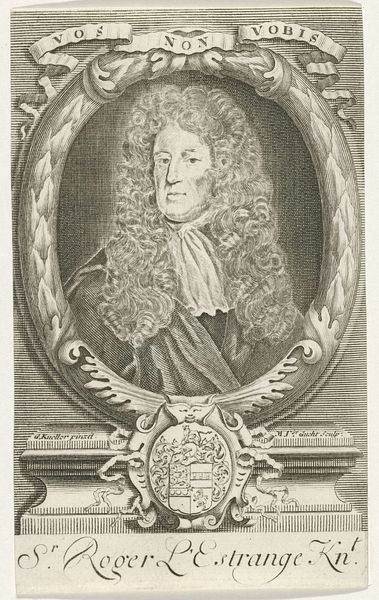
engraving
#
portrait
#
baroque
#
old engraving style
#
limited contrast and shading
#
portrait drawing
#
engraving
Dimensions: height 385 mm, width 284 mm
Copyright: Rijks Museum: Open Domain
Curator: Here we have Philibert Bouttats' engraving of Willem III, Prince of Orange. The work, completed between 1702 and 1726, captures the baroque style so prominent in portraits of the era. Editor: It's rather… intense. The crown floating above him, the elaborate drapery—it all screams "power," but somehow feels a little suffocating, too. Does anyone really need *that* much hair? Curator: Well, let's unpack that a bit. This image, and prints like it, served as propaganda, projecting an image of authority, of divine right. Note the inscription declaring William as King of England, Scotland, France, and Ireland. The hair, the lace, the armour—it's all carefully constructed regalia. Editor: I get the symbolic overload, I really do. But look closer—the hatching, the limited contrast… it lends this formal portrait an almost ghostly quality. He looks burdened, like all this royal weight is crushing him. It makes you wonder what it must have felt like to actually be him. Curator: That's a brilliant observation. Printmaking served a key role during this time, disseminating the likeness and authority of rulers like William III. This engraving would have been circulated widely, reinforcing his image and solidifying his political power across Europe. It represents the politics of imagery at its finest. Editor: And yet, stripped of the color, presented in these stark lines… he becomes oddly human. Like a character in a rather morbid play. I find it quite touching. Curator: Indeed. These details add so much to understanding how even in the process of crafting symbols, there’s a certain personality imprinted. Editor: It makes the historical figure of William less like a distant name in a history book, and much more like, perhaps, one of us. An unexpected window onto another person’s experience! Curator: Agreed. Perhaps that’s what good art always brings—insight that moves across the years.
Comments
No comments
Be the first to comment and join the conversation on the ultimate creative platform.
